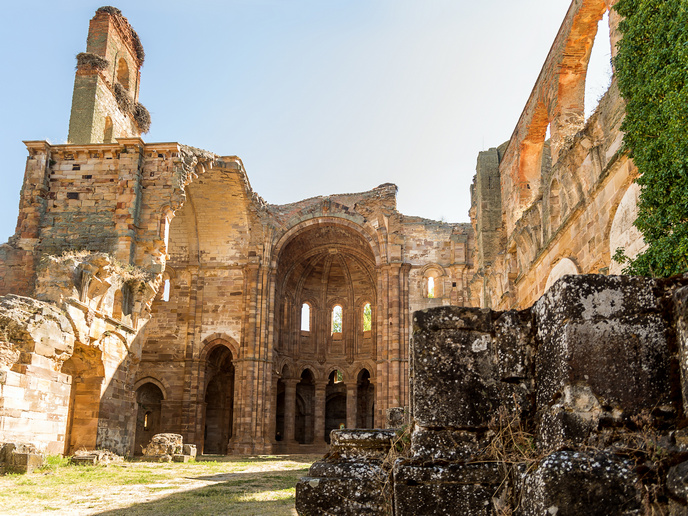Cash and conflict: or was more behind the 11th and 12th century building spree?
For the first time since the Roman Empire, in the 11th and 12th centuries masonry appeared everywhere: in castles, parish and monastic churches, and an immense number of towers, palaces and houses located inside the castles and cities. The history of architecture has also always looked to the great cathedral sites of central and northern Europe, at first Romanesque, then Gothic. But in the last 20-30 years, historians have started looking more closely at other European regions, especially the Mediterranean. But what can the architecture outside the traditionally considered ‘Carolingian heartland’, present-day France and Germany, show us? “Until now,” says Ana Rodriguez, principle investigator of the PETRIFYING WEALTH(opens in new window) project: “historians have overlooked the magnitude and importance of an epochal transformation that revolutionised the relationship between people and buildings in the 11th-12th centuries.” The project set out to understand the sudden ubiquity of masonry construction and its relationship with the complex social dynamics of the period, in regions outside the usual area of study. The process of petrification took place during the centuries generally associated with the ‘mediaeval expansion’, which has led to the long-held assumption that it was a consequence of economic growth; the result of greater wealth produced by and now present in the Latin West. “Our research has made it clear that in the regions examined building choices were primarily determined by elements of a broadly cultural and social character, rather than any of an economic nature,” explains Rodriguez, who is based at the Spanish National Research Council(opens in new window) in Madrid.
Stone masonry: the petrification of conflict in the Middle Ages?
Rodriguez wanted to clarify the characteristics, and the chronology, of the building process in the different regions, and understand the nature of a fundamental societal change that gave rise to the flurry of building. “We wanted to find out why, precisely, in the 12th and 13th centuries buildings shot up across the landscape. What triggered this dramatic change in building patterns?” She found that the conflicts that marked cities from the second half of the 11th century onwards resulted in a strong fragmentation of urban space, but that this manifested itself differently in Italy, southern France and Spain. “The family and consortium towers that began to dot many Italian cities did not appear in the cities of southern France. Conversely, the walls that in French cities, and to some extent also in Catalonia, divided spaces under the control of ecclesiastical powers from those controlled by laymen, did not appear in Italy. In short: the outcomes of the ‘petrification of conflict’ were very different,” says Rodriguez. She argues that the presence or absence of towers, of communal and episcopal quarters separated by walls, or of distinctive buildings of secular elites, is not mere coincidence. “Whether they are there, or not, reveals a fundamental distinction between the urban centres of the regions, and provides an important, and hitherto unused, key to assessing and comparing their history.”
Buildings, not just an outcome of prosperity
The team’s findings lend strong support to the idea that economic dynamics gained an unprecedented momentum in southern Europe later than usually ascribed, namely the second half or even the final decades of the 12th century. The role of peasant communities appeared in many areas to be greater than expected. For example, the ability of peasant communities to take a central role in the construction and management of their churches was more pronounced in Italy and Castile. In the case of iron metallurgy in the Alpine area, it was precisely rural communities who took the lead in what constituted a revolution in both technology and productivity.
Understanding the revolution in stone masonry requires a broad range of disciplines
“This is a complex issue that had conventionally been studied in a fragmented way,” notes Rodriguez. “I am particularly proud of the collaborative work between Madrid and Rome, and of having found lines of connection and transdisciplinary analysis, which represent an advance in knowledge.” The need to combine different methodologies; from documentary studies to archaeology and architectural studies: the way a range of expertise was combined was, Rodriguez feels, one of the project’s highlights. “Given the geographical extent of the phenomenon and the need to ascertain its characteristics for so many different types of buildings, it was necessary to create a very large database of information, related to thousands of buildings in many regions of Mediterranean Europe. Only the support of the European Research Council(opens in new window) made such a large undertaking possible,” adds Rodriguez.







